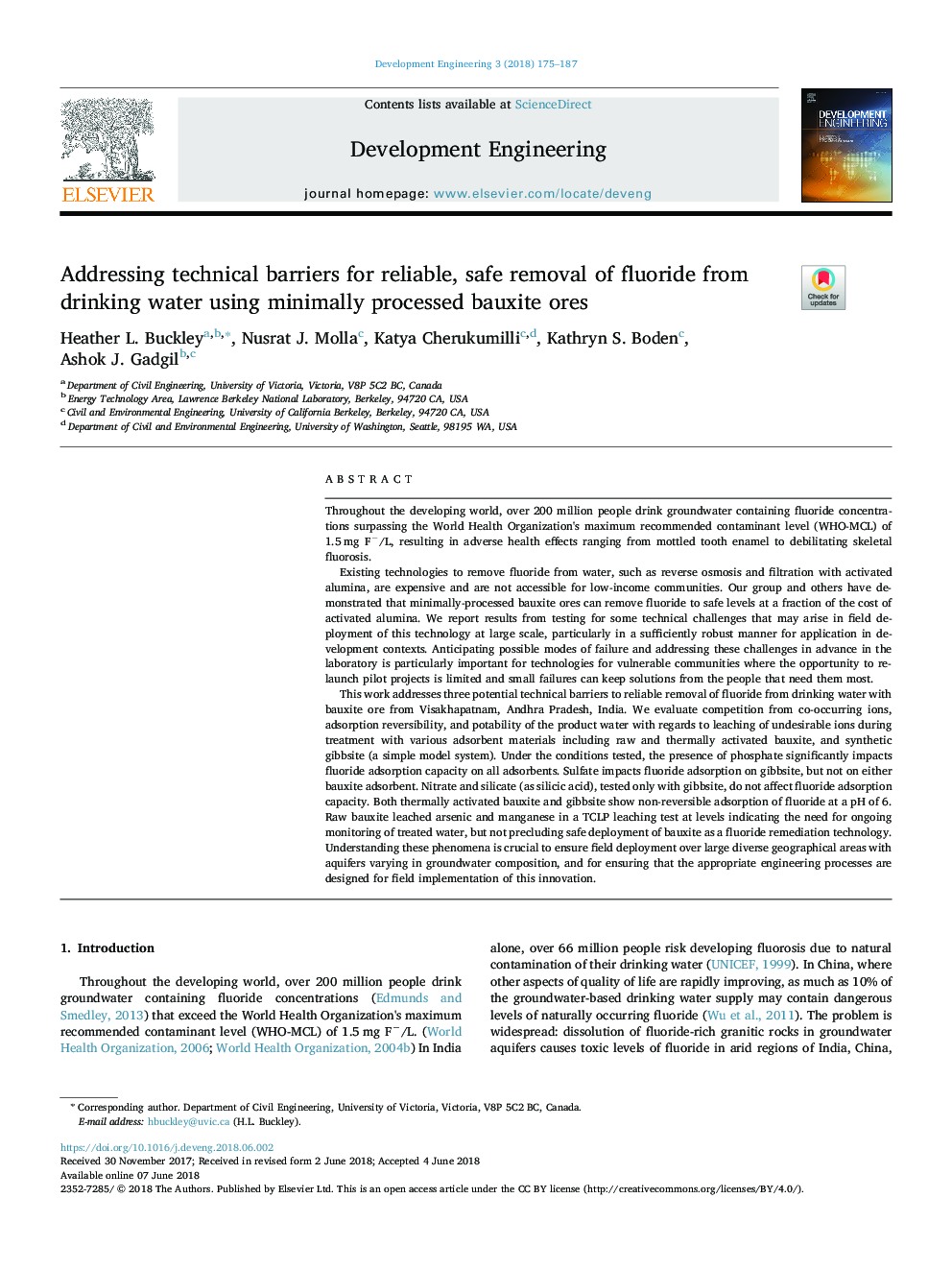| Article ID | Journal | Published Year | Pages | File Type |
|---|---|---|---|---|
| 7216216 | Development Engineering | 2018 | 13 Pages |
Abstract
This work addresses three potential technical barriers to reliable removal of fluoride from drinking water with bauxite ore from Visakhapatnam, Andhra Pradesh, India. We evaluate competition from co-occurring ions, adsorption reversibility, and potability of the product water with regards to leaching of undesirable ions during treatment with various adsorbent materials including raw and thermally activated bauxite, and synthetic gibbsite (a simple model system). Under the conditions tested, the presence of phosphate significantly impacts fluoride adsorption capacity on all adsorbents. Sulfate impacts fluoride adsorption on gibbsite, but not on either bauxite adsorbent. Nitrate and silicate (as silicic acid), tested only with gibbsite, do not affect fluoride adsorption capacity. Both thermally activated bauxite and gibbsite show non-reversible adsorption of fluoride at a pH of 6. Raw bauxite leached arsenic and manganese in a TCLP leaching test at levels indicating the need for ongoing monitoring of treated water, but not precluding safe deployment of bauxite as a fluoride remediation technology. Understanding these phenomena is crucial to ensure field deployment over large diverse geographical areas with aquifers varying in groundwater composition, and for ensuring that the appropriate engineering processes are designed for field implementation of this innovation.
Related Topics
Physical Sciences and Engineering
Engineering
Engineering (General)
Authors
Heather L. Buckley, Nusrat J. Molla, Katya Cherukumilli, Kathryn S. Boden, Ashok J. Gadgil,
